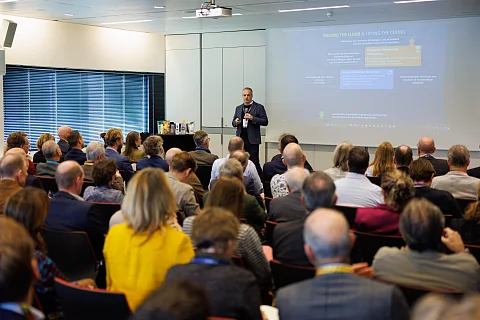Demand Creation Is Essential
03-11-2025
For a circular economy, demand articulation is key. Therefore, major companies promised at the plastic table to purchase at least 115,000 tons of recycled plastic for their packaging by 2030. Two of those companies were present at the conference: Coca-Cola and Unilever.

Unilever spends 5 billion euros annually on packaging and aims to use 40 percent less virgin plastic from oil within three years. This year, it plans to use 25 percent recycled plastic, and by 2030, all packaging should be reusable, recyclable, or biodegradable. This could save the company 11 percent of its annual 56 million tons of CO2 emissions.
To increase demand, the EU must mandate the blending of recycled materials, and national governments need to promote recycling, similar to how growth funds are currently operating. Subsequently, plastic producers, brands, and retailers are also encouraged to invest in this initiative. 'A mandatory demand at the end of the chain creates a very clear business case at the start of the chain,' says Thor Tummers of Unilever.
Cost Increase in Hundreds of Millions
According to him, companies must explain to consumers why they are using more recycled plastic. This leads to a higher price, although research by Deloitte shows that the price increase for sustainable products is often just 1 percent. A good marketer should be able to sell that, right? Tummers believes Unilever can 'absorb' this surcharge into its product pricing. 'But if you don't address the price, it won't work,' Tummers states.
Tummers asserts that the additional cost for a Magnum packaging made with biobased or recycled material is no more than an additional 1 cent. Almost nothing. However, when this is applied to packaging for soap, mayonnaise, petroleum jelly, or detergent, the entire process of sourcing, testing, certification, and approvals ultimately costs millions extra. 'The additional cost that we as Unilever pay for these types of programs is a few hundred million,' he says. For Unilever, the achieved CO2 reduction from recycled plastic also counts. 'Roughly, using 1 kilo of recyclate leads to a 1 kilo reduction in CO2,' Tummers explains.
Recycled Crates for Coca-Cola

Coca-Cola aims to reduce its CO2 emissions by 30 percent by 2030. Since 43 percent of emissions come from packaging, reducing the use of recycled materials will help lower those emissions. By eliminating the handle from multipack packaging of large bottles, the company saved 40,000 kilos of plastic per year and made 550,000 kilos more recyclable. All Coca-Cola bottles are made from 100 percent recycled plastic: rPET. 'Every year, we have to make the choice to pay much more for that. Since 2021, we have always made that choice,' says sustainability manager Eva Amsterdam of Coca-Cola Euro Pacific.
Moreover, the crates are made from 97 percent recycled material, although this has resulted in them not being as bright red as before. The raw materials were supplied by Healix, which produces hard plastics from recycled fishing and gardening nets. These crates last fifteen years; however, this order could not prevent Healix from facing difficulties and planning to relocate abroad.

According to Healix CEO Marcel Alberts, he struggles to sell his circular but more expensive product to large companies. 'At some point, a buyer comes to the table, and they have different targets,' he says. The cancellation of the blending obligation for recycled plastic earlier this year was the last straw for the company. 'We were almost finalized with a financier, and that fell through. Also, projects with customers were immediately put on hold,' he says.
This article has also appeared as part of a main article in Change Inc., editor André Oerlemans
